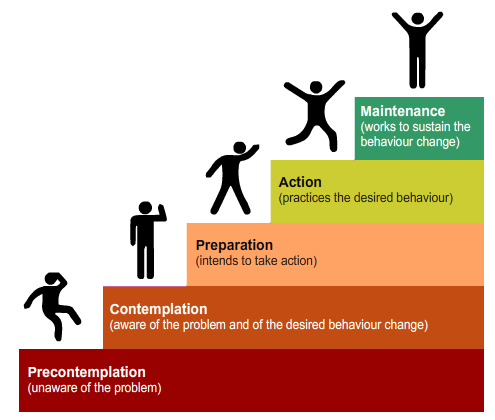Research shows that supporting self management can improve:
- self confidence / self efficacy
- self care behaviours
- quality of life
- clinical outcomes
- patterns of healthcare use
A review of almost 600 studies found that when people are supported to look after themselves, they feel better, enjoy life more and have less need to visit GP’s or hospitals.
Helping people help themselves, A review of the evidence considering whether it is worthwhile to support self management Health Foundation May 2011, Health Foundation
Glossary
The person is in the driving seat on this road to self management. On each side of the road consider the various people that may be important to the person.
Formalised Support: This includes structured services run by the NHS, Local Authority, voluntary organisations and other independent groups.
Informal support: This includes the large variety of support around us – family, friends and within our communities.

Glossary
The key message in this definition is that all three elements of the triangle need to be addressed. There is also a very strong interaction between them – a persons emotional reaction to their condition clearly will affect their motivation to pursue a self-management approach, the social impact might be more crucial to address than the physical (debt, loss of employment etc). Successful self management will happen when there is support for all three elements.
Glossary

This framework is useful at illustrating the process of HBC. This may be useful to those of you unfamiliar to HBC models to consider in terms of developing your practice within consultations and patient interactions. These models can look different but contain similar components.
Another model which enhances cardiovascular care in practice and is illustrated within the case scenarios and in the videos is Health Behaviour Change (HBC).
Glossary
All communication styles have their appropriate place and use, and successful communication involves mixing and matching to each individuals consultation.
Within Health Behaviour Change (HBC), there are a number of communication techniques that can enhance patient engagement including Motivational Interviewing.
Glossary

Key additional themes
There are a number of additional considerations that we have integrated into HEARTe to enrich your learning experience and support application of this knowledge within practice scenarios. These strategies are designed to compliment the cardiac learning within HEARTe and are integral to enhancing cardiac care.
Alongside these themes we recognise the importance of respect, understanding and consistency when delivering cardiac care in practice.
We hope that by increasing your understanding of cardiac care that you can be become a more confident practitioner.
Throughout HEARTe the following themes are used illustrating application of your cardiac knowledge in practice area scenarios. These themes include:
- Communication
- Health Behaviour Change (HBC) interventions
- Self Management philosophy
All of the modules use the different cases to illustrate the learning outcomes required to complete the module. Therefore we recommend that you work through all of the cases to ensure all of the learning outcomes can be achieved.
Glossary
HEARTe has been designed primarily for use by registered health professionals across primary and acute services who are involved in general areas which include cardiac care, however wider health and social partnership agencies and staff may also benefit from using it.
The OHCA specific module is a resource for those trained to respond to an Out of Hospital Cardiac Arrest (OHCA). Chest Heart and Stroke Scotland (CHSS) launched this resource on September 30th 2017.
There are 14 interactive, dynamic modules within HEARTe.
Please consider images and text size may vary depending on your screen device and settings.
Key themes
There are many key themes which occur throughout the HEARTe modules. These are mentioned in the introductory section Applying HEARTe in practice. Refer also to our Glossary.
Details of CHSS General Medical Disclaimer can be viewed at the bottom of the page.





